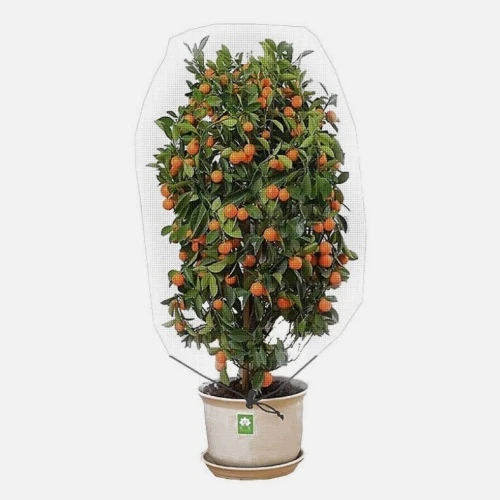-
 Afrikaans
Afrikaans -
 Albanian
Albanian -
 Amharic
Amharic -
 Arabic
Arabic -
 Armenian
Armenian -
 Azerbaijani
Azerbaijani -
 Basque
Basque -
 Belarusian
Belarusian -
 Bengali
Bengali -
 Bosnian
Bosnian -
 Bulgarian
Bulgarian -
 Catalan
Catalan -
 Cebuano
Cebuano -
 China
China -
 Corsican
Corsican -
 Croatian
Croatian -
 Czech
Czech -
 Danish
Danish -
 Dutch
Dutch -
 English
English -
 Esperanto
Esperanto -
 Estonian
Estonian -
 Finnish
Finnish -
 French
French -
 Frisian
Frisian -
 Galician
Galician -
 Georgian
Georgian -
 German
German -
 Greek
Greek -
 Gujarati
Gujarati -
 Haitian Creole
Haitian Creole -
 hausa
hausa -
 hawaiian
hawaiian -
 Hebrew
Hebrew -
 Hindi
Hindi -
 Miao
Miao -
 Hungarian
Hungarian -
 Icelandic
Icelandic -
 igbo
igbo -
 Indonesian
Indonesian -
 irish
irish -
 Italian
Italian -
 Japanese
Japanese -
 Javanese
Javanese -
 Kannada
Kannada -
 kazakh
kazakh -
 Khmer
Khmer -
 Rwandese
Rwandese -
 Korean
Korean -
 Kurdish
Kurdish -
 Kyrgyz
Kyrgyz -
 Lao
Lao -
 Latin
Latin -
 Latvian
Latvian -
 Lithuanian
Lithuanian -
 Luxembourgish
Luxembourgish -
 Macedonian
Macedonian -
 Malgashi
Malgashi -
 Malay
Malay -
 Malayalam
Malayalam -
 Maltese
Maltese -
 Maori
Maori -
 Marathi
Marathi -
 Mongolian
Mongolian -
 Myanmar
Myanmar -
 Nepali
Nepali -
 Norwegian
Norwegian -
 Norwegian
Norwegian -
 Occitan
Occitan -
 Pashto
Pashto -
 Persian
Persian -
 Polish
Polish -
 Portuguese
Portuguese -
 Punjabi
Punjabi -
 Romanian
Romanian -
 Russian
Russian -
 Samoan
Samoan -
 Scottish Gaelic
Scottish Gaelic -
 Serbian
Serbian -
 Sesotho
Sesotho -
 Shona
Shona -
 Sindhi
Sindhi -
 Sinhala
Sinhala -
 Slovak
Slovak -
 Slovenian
Slovenian -
 Somali
Somali -
 Spanish
Spanish -
 Sundanese
Sundanese -
 Swahili
Swahili -
 Swedish
Swedish -
 Tagalog
Tagalog -
 Tajik
Tajik -
 Tamil
Tamil -
 Tatar
Tatar -
 Telugu
Telugu -
 Thai
Thai -
 Turkish
Turkish -
 Turkmen
Turkmen -
 Ukrainian
Ukrainian -
 Urdu
Urdu -
 Uighur
Uighur -
 Uzbek
Uzbek -
 Vietnamese
Vietnamese -
 Welsh
Welsh -
 Bantu
Bantu -
 Yiddish
Yiddish -
 Yoruba
Yoruba -
 Zulu
Zulu
outdoor safety netting
The Importance of Outdoor Safety Netting
In today's world, outdoor activities are a significant part of our lives, offering opportunities for recreation, leisure, and even work-related tasks. Whether it's construction sites, sports facilities, or residential areas, ensuring the safety of individuals engaged in outdoor activities is paramount. One effective way to enhance safety in these environments is through the use of outdoor safety netting.
Outdoor safety netting serves various purposes across multiple sectors, providing a reliable solution to mitigate risks associated with falls, falling objects, and other potential hazards. This specialized netting is designed to act as a barrier, preventing accidents that could result in injury to workers, customers, or passersby. Its applications can be seen in construction sites, where materials may inadvertently fall, potentially causing serious injuries. By installing safety netting around the perimeter of a site, companies can create a safer environment and demonstrate their commitment to safety standards.
In the realm of sports and recreational activities, safety netting plays a crucial role in protecting players and spectators alike. For instance, in sports such as tennis, baseball, and golf, netting can prevent balls from straying into undesired areas, thereby safeguarding bystanders from potential injuries. Moreover, this netting can also deter animals from entering sports fields, ensuring that play continues without unexpected interruptions.
The installation of outdoor safety netting is not just about preventing accidents; it also conveys a message of responsibility. Organizations that prioritize safety by using netting demonstrate their dedication to the well-being of everyone involved. This can build trust with clients and the community, as it shows that they take proactive measures to ensure a secure environment.
outdoor safety netting

When considering the materials used for outdoor safety netting, it is essential to select durable options capable of withstanding various weather conditions. High-density polyethylene (HDPE) and polypropylene are two popular choices due to their strength, UV resistance, and lightweight properties. These materials not only provide the necessary safety features but also have a long life span, making them a cost-effective investment in the long run.
Furthermore, safety netting can be customized to fit specific needs and environments. This adaptability ensures that it provides maximum protection, regardless of the setting. Whether it’s a temporary installation for an event or a permanent fixture at a construction site, tailor-made solutions can effectively address unique safety concerns.
Regulations and standards surrounding safety netting vary by region and industry, underscoring the importance of compliance. Organizations must stay informed about these regulations and ensure that their netting solutions meet the required standards. This not only helps in avoiding legal repercussions but also enhances the overall safety of operations.
In conclusion, outdoor safety netting is an indispensable tool in promoting safety in various contexts. Whether for construction sites, sporting arenas, or public spaces, the benefits of using safety netting are manifold. It prevents accidents, protects individuals, and reflects a commitment to safety. As outdoor activities continue to play a vital role in our daily lives, investing in safety measures such as netting becomes not just a necessity but a responsibility that can profoundly impact community safety. Embracing this proactive approach to safety will pave the way for a more secure outdoor environment, where people can enjoy their activities without unnecessary risk.
-
Shipping Plastic Bags for Every NeedNewsJul.24,2025
-
Safety Netting: Your Shield in ConstructionNewsJul.24,2025
-
Plastic Mesh Netting for Everyday UseNewsJul.24,2025
-
Nylon Netting for Every UseNewsJul.24,2025
-
Mesh Breeder Box for Fish TanksNewsJul.24,2025
-
Expanded Steel Mesh Offers Durable VersatilityNewsJul.24,2025











